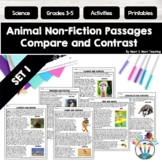394 results
12th grade chemistry homeschool curricula under $5
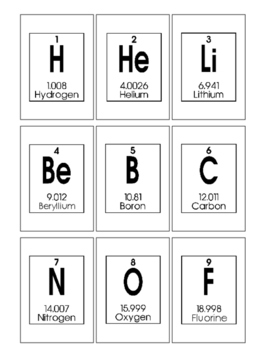
118 Periodic Table of Elements Flashcards. Homeschool Science and Chemistry.
One set of our Specialty Flash Cards in a single PDF file.Here is what you get!118 Periodic Table of Elements Flashcards. Prints 118 flashcards and 1 title card. Prints 14 pages.Please see our other items in our store. We offer full sets of curriculum for preschool aged children. Have a wonderful day!
Subjects:
Grades:
PreK - 12th
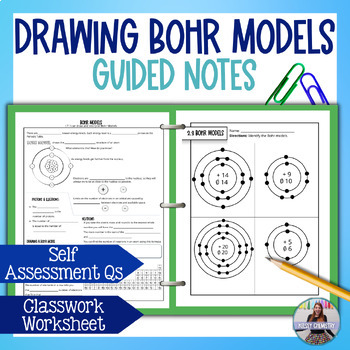
Drawing and Identifying Bohr Models Guided Notes Lesson and Worksheet
In this lesson, students will learn how to draw Bohr models and identify Bohr models. Students should already know how to determine the number of protons and electrons in an atom using the periodic table. This lesson will teach how to determine the number of neutrons in an atom from the mass number. Students will also learn how to organize electrons into principal energy levels using a periodic table to draw proper Bohr models. Download the preview file to get a look! WHAT'S INCLUDED?Thought
Subjects:
Grades:
9th - 12th
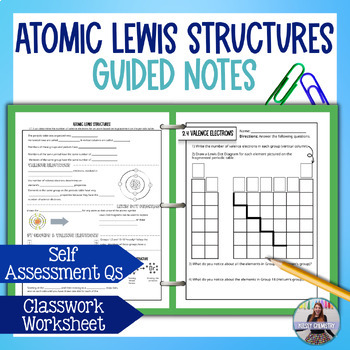
Valence Electrons and Atomic Lewis Structures Guided Notes Lesson & Worksheet
Students learn how to determine number of valence electrons and draw Lewis dot diagrams for atoms that are unbonded. Students should already how to read/draw Bohr diagrams. Students will learn the advantage of Lewis diagrams. Periodic table is used to determine the number of valence electrons. This is taught using the "imaginary box" method. I call this the "training wheels." Students will imagine there's a box around the element symbol and put electrons around the box, circling around it to e
Subjects:
Grades:
9th - 12th
NGSS:
HS-PS1-1
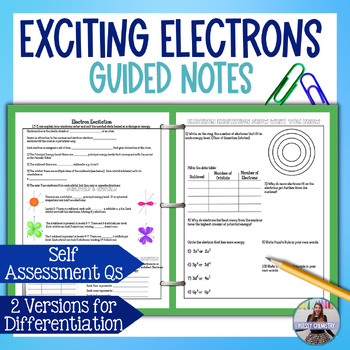
Exciting Electrons Guided Notes Lesson - Excited State, Ground State, Flame Test
The Bohr model and excited vs. ground state is very tough to understand. In this electron excitation lesson, students are taught by an analogy of electrons filling an empty apartment building called Quantum Estates. The elevator is broken, so the electrons move into rooms and must use the stairs. It helps to reinforce that electrons exist closest to the nucleus (Aufbau principle) and that they only double up when they have to (Hund's rule).WHAT'S INCLUDED?5 E's lesson planLink to video lessonTh
Subjects:
Grades:
9th - 12th
Also included in: Flame Test, Spectral Lines, Quantum Estates | Electron Excitation Bundle

Electron Configuration Lesson and Guided Notes
This lesson teaches electron configuration using the diagonal rule. Students will be able to write electron configurations using the diagonal rule, identify atoms from their electron configurations and identify excited and ground state configurations. This lesson does include the concept of the D-shift and F-shift. Electrons fill lowest energy to highest, and therefore the numerical energy levels don't always go in order. Download the preview file to get a look! WHO IS IT FOR?This lesson is pe
Subjects:
Grades:
9th - 12th
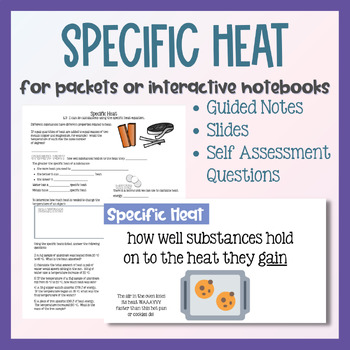
Specific Heat Capacity Lesson and Guided Notes
This lesson teaches that specific heat is how well substances hold on to the heat that they gain - not that typical, scary chemistry jargon. The focus is on comparing the high specific heat of water to that of the metals. Download the preview file to get a look! FEATURESGuided notes that have students listening to you instead of writing notes.Opt to use slides for all students and guided notes only for differentiation.Accurate diagrams, so students don't have to rely on their art skills to lea
Subjects:
Grades:
9th - 12th
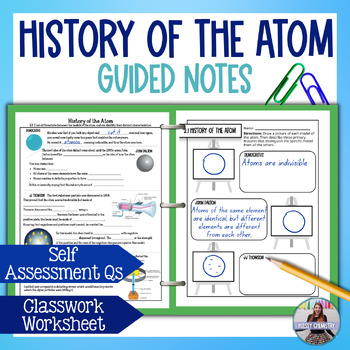
Models and History of the Atom Guided Notes Lesson and Practice Worksheet
This lesson offers an overview of the history of the atom highlighting a few prominent models of the atom. Students will begin with Democritus and the first atomic model and learn John Dalton, JJ Thomson, Rutherford, Bohr and lastly the modern model of the atom. Download the preview file to get a look!WHAT'S INCLUDED?1 Lesson PlanThought provoking Question of the Day23 Powerpoint Slides in 3 different styles: Whimsical, Classical & Dark ModeLinks to Copy Google Slides2 Versions of notes:
Subjects:
Grades:
9th - 12th
NGSS:
HS-PS1-8
, HS-PS1-4
, HS-PS1-2

Thanksgiving Polymer Food Science Chemistry Lab: The Cranberry Sauce Challenge
This Thanksgiving Food Chemistry lab is the perfect way to tie in some Thanksgiving science while letting your students get their hands wet in the lab and learn about polymers! Have your students design their own lab to create the best, most stable gel in this cranberry sauce challenge. Background chemistry about pectin and how it stabilizes cranberry sauce and other jams and jellies is included as well as the definition of a polymer, polymer science and cross-linking. Students choose from mu
Subjects:
Grades:
9th - 12th
NGSS:
HS-PS1-3
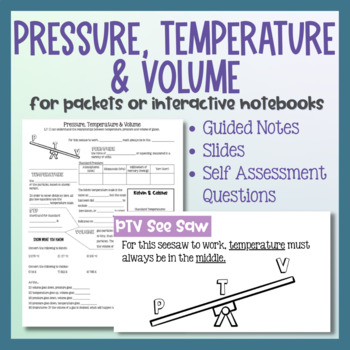
Gases Pressure, Temperature, Volume Relationships Lesson and Guided Notes
This lesson teaches the relationships between temperature, pressure and volume of gases. It is the perfect preparatory lesson for the combined gas law and ideal gas law. Using the PTV see-saw, students learn the relationships (temperature must always go in the middle for the see-saw to work).This lesson also teaches the conversion of Celsius to Kelvin. For my students, this is the first time I teach it, since Kelvin is pertinent to the gas law equations. Download the preview file to get a look!
Subjects:
Grades:
9th - 12th

Separation of Mixtures Lesson and Guided Notes
This lesson teaches students six methods for separation of mixtures: distillation, chromatography, precipitation reactions, separatory funnel, evaporation, and filtration. Students should have a strong understanding on the types of mixtures for this lesson. Download the preview file to get a look! FEATURESGuided notes that have students listening to you instead of writing notes.Opt to use slides for all students and guided notes only for differentiation.Accurate diagrams, so students don't have
Subjects:
Grades:
9th - 12th
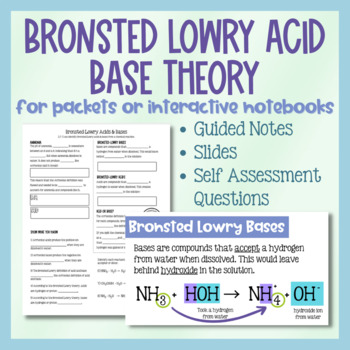
Bronsted Lowry Acid Base Theory Lesson and Guided Notes
This lesson offers expands the Arrhenius definition of acid and base to now include the Bronsted Lowry definition. There is no search for conjugate pairs in this lesson, but instead, students are asked to look at the "before and after" of a chemical and evaluate whether it has lost or gained a hydrogen atom. From there they make the acid or base determination using the prefix BAAD. Bases accept, acids donate. Download the preview file to get a look! FEATURESGuided notes that have students list
Subjects:
Grades:
9th - 12th
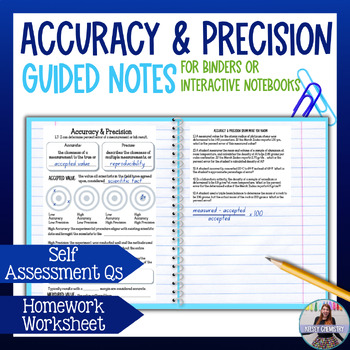
Accuracy and Precision Lesson and Guided Notes
This accuracy and precision lesson teaches the difference between accuracy and precision in terms of chemistry and science experiments. Students will also learn the percent error equation and how it is used to determine whether experimental results are valid using the 5% rule. Download the preview file to get a look! WHAT'S INCLUDED?Thought provoking Question of the Day27 Powerpoint Slides in 3 different styles: Whimsical, Classical and Dark ModeLinks to Copy Google SlidesHalf Page Guided Notes
Subjects:
Grades:
10th - 12th
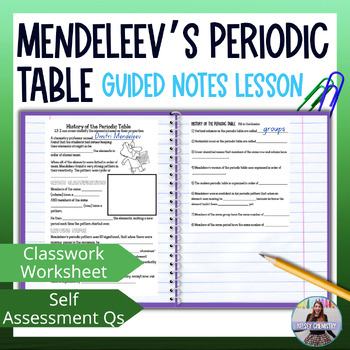
History of Mendeleev's Periodic Table Guided Notes Lesson and Practice Worksheet
This lesson teaches the history of the Periodic Table focusing on Dmitri Mendeleev. The slides explain that the periodic table was first created by Mendeleev by finding patterns in the properties of the elements. The pattern he found was so strong and distinctive that he left spaces for elements he assumed hadn't been discovered yet. And he was right! Download the preview file to get a look! WHO IS IT FOR?This lesson is perfect for a first year high school chemistry class, or physical science
Subjects:
Grades:
9th - 12th

Physical and Chemical Properties and Changes Lesson and Guided Notes
In this lesson students learn the differences between physical and chemical properties and physical and chemical changes. These notes work best with colored pencils to help distinguish physical properties such as color, or chemical properties such as ability to rust or corrode. Download the preview file to get a look! FEATURESGuided notes that have students listening to you instead of writing notes.Opt to use slides for all students and guided notes only for differentiation.Accurate diagrams,
Subjects:
Grades:
9th - 12th

Solubility Curves Lesson and Guided Notes
This lesson distinguishes saturated, unsaturated and supersaturated solutions. Then students learn how to read solubility curves based on the region of the curve. Then finally, they will learn how to manipulate solubility curves, such as, how to read the curve if the amount of water is doubled or halved. The lesson finishes with 12 questions based on the NYS Chemistry Reference Tables. Download the preview file to get a look! FEATURESGuided notes that have students listening to you instead of
Subjects:
Grades:
9th - 12th
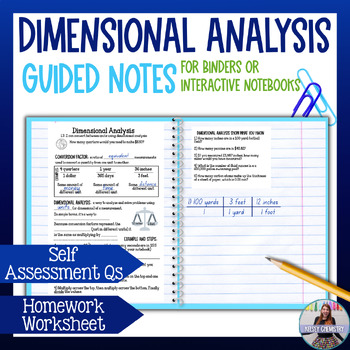
Dimensional Analysis Guided Notes Lesson for Chemistry
This dimensional analysis lesson teaches students to convert units using the dimensional analysis method or factor label method. The example in the notes is a long conversion of units of time. Students will convert some known and new, chemistry specific units in this lesson.Download the preview file to get a look!WHAT'S INCLUDED?Thought provoking Question of the Day21 Powerpoint Slides in 3 different styles: Whimsical, Classical and Dark ModeLinks to Copy Google SlidesHalf Page Guided Notes for
Subjects:
Grades:
9th - 12th
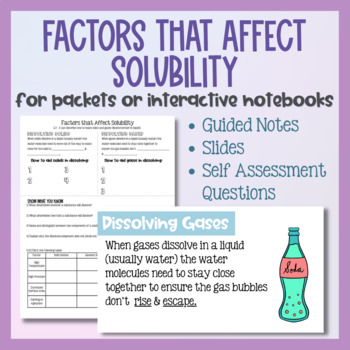
Factors that Affect Solubility Lesson and Guided Notes
This lesson teaches the factors that affect solubility for both solid and gaseous solutes in water. The two sets of factors that affect solubility are compared to each other to bring strong differentiation between the two types of solutes. Download the preview file to get a look! FEATURESGuided notes that have students listening to you instead of writing notes.Opt to use slides for all students and guided notes only for differentiation.Accurate diagrams, so students don't have to rely on their
Subjects:
Grades:
9th - 12th
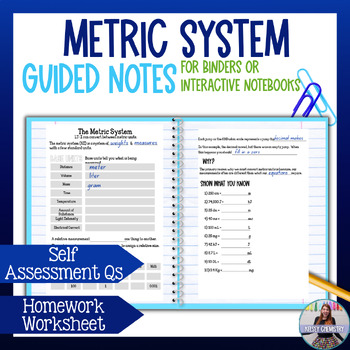
Metric System Lesson and Guided Notes with Conversions Practice Worksheet
This lesson teaches the metric system base units and metric conversions using metric prefixes milli through kilo. Conversion is taught by moving the decimal. This is taught using the place value system and understanding that moving the decimal is effectively the same as multiplying or dividing by ten. Download the preview file to get a look! WHAT'S INCLUDED?Thought provoking Question of the Day18 Powerpoint Slides in 3 different styles: Whimsical, Classical and Dark ModeLinks to Copy Google S
Subjects:
Grades:
10th - 12th
CCSS:
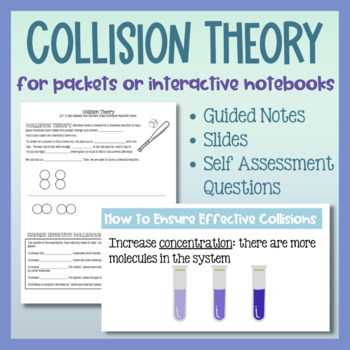
Collision Theory Lesson and Guided Notes
Collision Theory can be a beast if you let it, but this lesson gets it down to six simple ways to ensure effective collisions. This lesson makes Collision Theory simple for your students to understand and even tests their knowledge at the summary of the lesson. Download the preview file to get a look!FEATURESGuided notes that have students listening to you instead of writing notes.Opt to use slides for all students and guided notes only for differentiation.Accurate diagrams, so students don't ha
Subjects:
Grades:
9th - 12th
NGSS:
HS-PS1-5

Chemical Reactions Stations Review Activity
Save yourself TIME AND ENERGY with this NO PREP CHEMICAL REACTIONS- STATIONS REVIEW ACTIVITY! Use as an introductory activity, review and reinforcement exercise, homework assignment or part of a test review. This resources includes 7 EDITABLE print and go cards that include tasks, questions and activities as well as a 2-page student answer document. Use my ready to go stations or customize to fit your classroom needs. I have also included a complete answer key for easy grading. Need a digital
Subjects:
Grades:
6th - 12th
NGSS:
HS-PS1-1
, MS-PS1-2
, MS-PS1-5
, HS-PS1-2
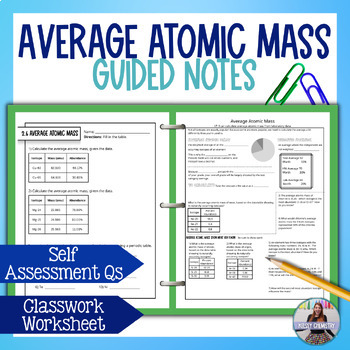
Average Atomic Mass Guided Notes Lesson and Worksheet
This lesson why average atomic mass on the periodic table are not whole numbers, and are instead a weighted average of naturally occurring isotopes of an element. It also teaches how to calculate the average atomic mass. This lesson uses a an academic class average with weighted category averages to help teach the concept of a weighted average. Download the preview file to get a look! WHAT'S INCLUDED?5 E's lesson plan Thought provoking Question of the Day20 Powerpoint Slides in 3 different sty
Subjects:
Grades:
9th - 12th
Also included in: Average Atomic Mass Bundle, Guided Notes Lesson, Worksheet and Lab
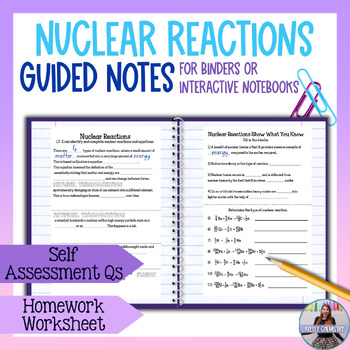
Types of Nuclear Reactions Lesson and Guided Notes
This lesson teaches the four nuclear reactions: natural transmutation (decay), artificial transmutation, fission and fusion. Students will learn how to identify and distinguish the nuclear reactions from each other. Download the preview file to get a look! WHAT'S INCLUDED?5 E's lesson planThought provoking Question of the Day19 Powerpoint Slides in two different styles: Whimsical & ClassicalLinks to Copy Google Slides2 Forms of Notes: Half Page and Full Page11 Show What You Know Questions d
Subjects:
Grades:
9th - 12th
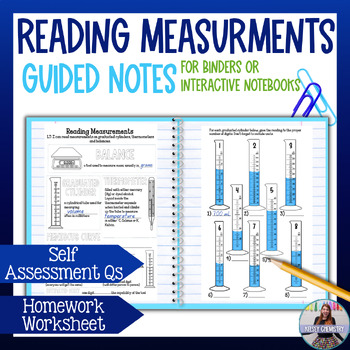
Reading Measurements - Graduated Cylinder Lesson and Guided Notes
Your science students need to know how to properly read measurements in graduated cylinders and thermometers. This lesson is perfect for back to school and learning about lab safety and reporting scientific data. Students will learn the difference between known and estimated digits in their measurements and how many digits they should report their measurements. Download the preview file to get a look! WHAT'S INCLUDED?Thought provoking Question of the Day16 Powerpoint Slides in 3 different sty
Subjects:
Grades:
9th - 12th
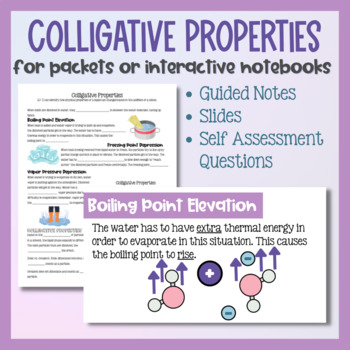
Colligative Properties Lesson and Guided Notes
This lesson teaches boiling point elevation, vapor pressure depression and freezing point depression - the colligative propreties! Students will relate intermolecular forces of water to the ability of water to freeze, boil and evaporate. Download the preview file to get a look! FEATURESGuided notes that have students listening to you instead of writing notes.Opt to use slides for all students and guided notes only for differentiation.Accurate diagrams, so students don't have to rely on their a
Subjects:
Grades:
9th - 12th
Showing 1-24 of 394 results




